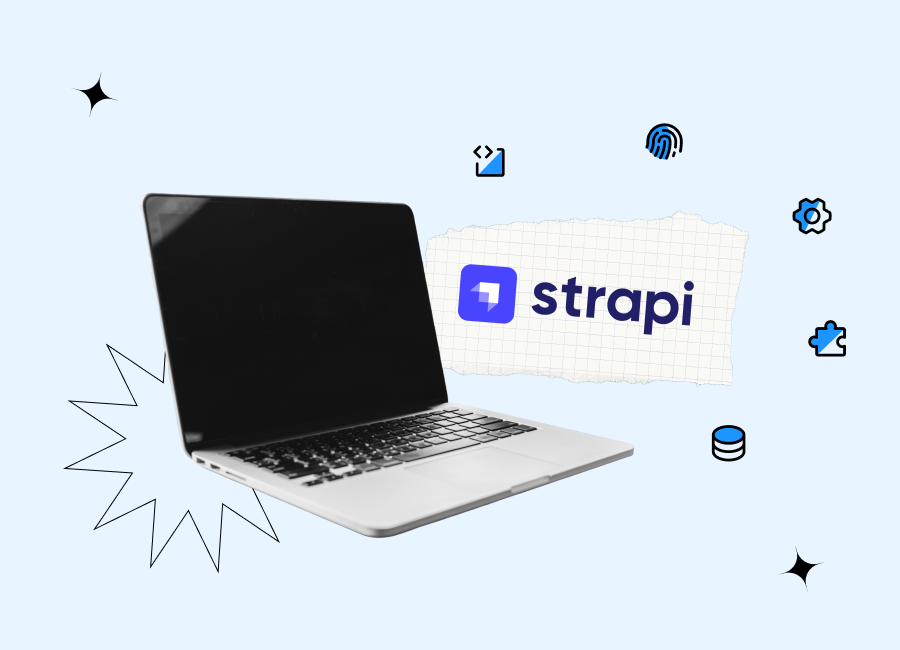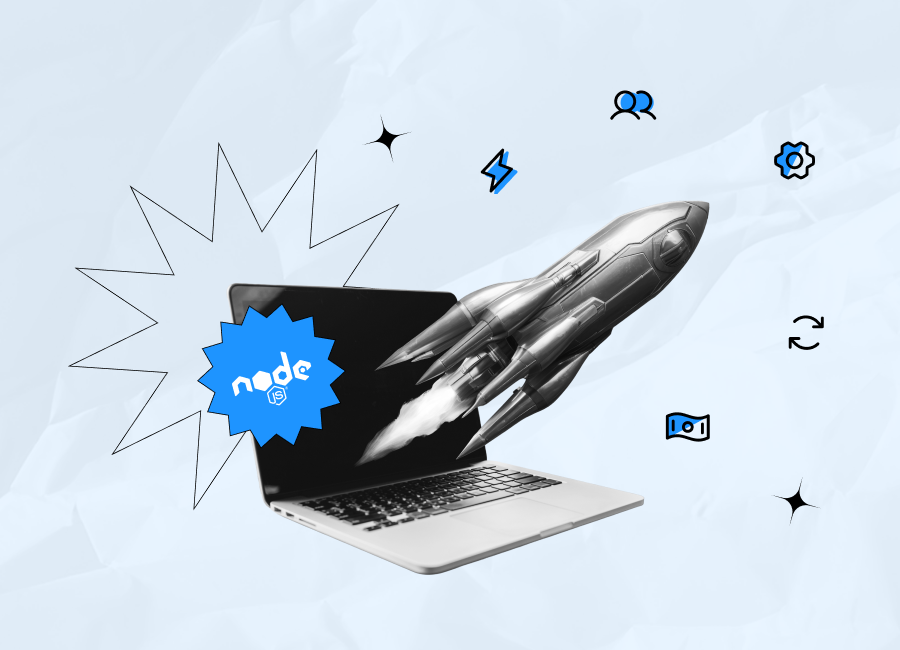The choice of a tech stack for your app development project is a very important decision that you should make together with your development team at the planning stage. Today Flutter is one of the most widely used frameworks in mobile app development. But will it be a good option for your project, and what pitfalls should you be aware of? In this article, we are going to talk about Flutter pros and cons and explain when it is reasonable to opt for it for your solutions.
What is Flutter?
Before discussing the strengths and weaknesses of Flutter app development, let’s focus on some basics. Flutter is billed as an open-source framework presented and maintained by Google. But it’s more accurate to say that it is a software development kit (SDK). Apart from the framework itself, it also offers a wide collection of tools, libraries, and APIs. It was introduced in 2017 and since then has gained popularity among front-end and full-stack developers who build reliable, visually appealing cross-platform apps for various industries.
Flutter developers do not need to write separate code for an iOS app and then separate code for an Android solution. It’s enough to create a single code base that can be further compiled for being run on different operating systems — not only Android and iOS but also macOS, Linux, Windows, and others.
The foundation of Flutter is Dart, an object-oriented programming language. It complies directly in JavaScript, as well as native code for mobile and desktop platforms. Thanks to Dart, Flutter doesn’t need to rely on bridges to help it communicate with a platform as, for example, happens in React Native. That makes it possible to ensure excellent app performance.
Today it is the most popular framework used in cross-platform mobile projects. A survey conducted in 2022 demonstrated that 46% of developers worldwide use Flutter for cross- platform apps. Meanwhile, another popular framework that offers similar possibilities, React Native, is used by 32% of developers.

If we look at the list of the most widely applied frameworks and libraries in general, without taking into account the type of development, we see that Flutter also maintains a very strong position. Based on the results of a worldwide study conducted in May 2023, Flutter is included in the top 10.
To understand the reasons behind the popularity of this framework, it’s useful to consider Flutter pros and cons.
Pros of Flutter development
To enjoy the most important benefits of Flutter, below, you need to be sure your development team has enough skills and experience in working with this technology and that the technology perfectly suits your project.

- Single code for different operating platforms. Flutter developers need to write code only once and then use it for delivering mobile, web, and desktop apps.
- Faster time-to-market. Cross-platform development reduces the time typically required to write different code bases for separate apps.
- Lower development costs. This advantage is closely related to the previous one. It is cheaper to prepare just one code base and further use it for several app versions.
- Native-like experience. Flutter doesn’t use any intermediary code representations or interpreters that negatively affect software performance. Instead, it works with a graphic engine dubbed Skia that ensures smooth, native-like performance of cross- platform apps.
- Use of widgets. In the Flutter framework, widgets are the central class hierarchy and act as building blocks. These visual elements can be applied to create user interfaces and define the desired functionality of your solutions. Flutter provides a series of ready-to-use widgets, but at the same time, developers can build their own or customize those already available. Using Flutter widgets can simplify a wide range of tasks for developers and help them deal with them significantly faster.
- Strong community. As mentioned above, Flutter has a lot of supporters among developers. Thanks to this, developers can always find somebody who can help them overcome issues or find the right approach to building various Flutter apps. And the community is growing. From the perspective of businesses, this is a positive trend, as it means it’s not difficult to find Flutter developers.
- Well-developed documentation. Thanks to support from Google and the community, there are a lot of learning materials, tech documents, resources, and tutorials that greatly facilitate the work for developers.
- High safety. Safety is ensured already on the syntax level. UI code in Flutter is single-threaded. The execution of computational threads is performed in isolated sandboxes. This approach helps to eliminate shared or unsafe resources that can cause additional vulnerabilities.
- Automated testing tool set. Flutter offers tools that help development teams streamline and automate the testing process. This can significantly reduce the time typically required for writing tests.
- Hot reload. This highly valued feature lets developers immediately see all the changes introduced to the code in the app. This lets development teams try out new ideas without wasting too much time on experiments and cuts down time needed to fix bugs.
- Add-to-app. Of course, it is always easier to work with the chosen technology from the very beginning of your project and to build an app from scratch fully with it. But what can be done if you already have a native mobile application and now want to add new features with Flutter? Fully rebuilding your app is not the best answer from a business perspective. However, you can rely on the so-called Add-to-app feature available in Flutter. It will let your developers build new functionality and rewrite the existing parts of your natively built app in Flutter. But the main benefit is that it will be possible to keep the existing solution while working on its enhancement and migration. This approach is especially valuable when your app is rather complex and it can be challenging to modernize it all at once.
Cons of Flutter app development
Though the benefits of Flutter make this technology a good choice for projects of different types, bear in mind that it has some drawbacks. The technology is still comparatively young, which explains why some aspects are not fully adjusted to the needs of developers.

- Weighty and large applications. The first thing to mention here is the size of applications built with Flutter. That’s one reason developers sometimes look for alternatives.
- Comparatively low adoption of Dart. The nature of Dart provides a lot of benefits to Flutter developers. However, we should admit that the popularity of this language is still rather low, especially if we compare it with Javascript, Java, or C#. There are not many young developers who opt for Dart as the first language to start their programming journey. As a result, in some specific cases, it may be rather challenging to find experts who work with this language and will be able to build your app in accordance with your requirements. However, the situation is gradually changing and the popularity of Dart is increasing.
- Issues with iOS. Though, in general, Flutter apps work well on different platforms, there are some obvious advantages on Android. The explanation here is very simple: Flutter was created by Google. That’s why some issues with apps built with Flutter on iOS devices are possible.
- Limited support of third-party libraries. In comparison to many other frameworks, the possibility of relying on external libraries for Flutter developers is limited.
How to start your Flutter app development journey
If your team has never worked with Flutter before, it is necessary to take some preparatory steps before starting to build applications with this SDK. Let us share a couple of recommendations with you.
Step 1: Make sure your system parameters let you create apps with Flutter
If you use a Windows computer, it must have the 10th or newer version on the 64-bit CPU. Git for Windows and PowerShell 5.0 should be preinstalled and you should have not less than 1.64 GB of free disk space.
If you are a macOS user, you need to install Xcode of the latest version and have at least 2.8 GB of free disk space.
Using Linux, 600 MB available on the disk will be enough, but you will also need to have some common-line tools like bash, curl, file, zip, unzip, and others in the development environment.
Step 2: Download Flutter SDK
When you open the official Flutter website, you will need to choose your operating system first and then follow the provided instructions. Regardless of the chosen platform, you will be able to build Flutter apps for Android and iOS. However, it will be required to have an editor that is platform-specific. If you want to develop a web solution, you also should have a Chrome browser. As for Dart itself, its plugin comes together with Flutter.
Step 3. Choose and install an editor
Flutter app development involves working with an editor and allows you to select any integrated development environment (IDE) that has Flutter command lines. Nevertheless, it is recommended that you opt for IDEs that are officially supported by Google. For example, Visual Studio, Intellij, or Android Studio.
Want to build a cross-platform app?
Our Flutter developers will deliver a splendid solution with rich functionality and excellent performance in full accordance with your requirements.
When should you consider Flutter for your project?
Flutter app development has its benefits and drawbacks. However, it is vital to understand that these pluses and minuses are not the same in all situations. The specifics of your project or external conditions can make the disadvantages too obvious and cause problems. For some other projects, Flutter can be a perfect option and all possible drawbacks will seem absolutely insignificant.
Based on the experience of our team in Flutter development, we can define the cases when it’s a great idea to opt for Flutter to build your app. So, what are the best scenarios for using Flutter?
- You want to create an MVP or you need to have your app delivered as soon as possible. As mentioned earlier, with Flutter, developers can build solutions much faster than with any other SDK, including cross-platform ones. This is possible thanks to the provided builder tool and numerous widgets available to development teams. All major steps in realizing the project, like coding, testing, and bug fixing, are streamlined and simplified, which is extremely valuable in situations with strict timeframes. That’s why Flutter often becomes the best choice for a minimum viable product.
- You want a cross-platform app with high performance. Probably you’ve heard that native apps typically perform better than applications that can run on different platforms. Nevertheless, Flutter apps stand out from the rest for their speed, reliability, and seamless functioning.
- You want to create a beautiful UI with complex features. Flutter provides the possibility to manage every pixel of the app’s interface. Thanks to this, you can create breathtaking UIs with multiple elements that won’t have any negative effect on the performance of your solution. Given this, Flutter app development is a reasonable option for cases when you have specific UI requirements.
Well-known apps built with Flutter
Most of us don’t give much thought to the technologies applied in apps we use. So it may surprise you to know that a long list of very popular applications were created with the help of this cross-platform SDK, including:

- Google Pay
- Google Ads
- Google Classroom
- Nubank
- eBay Motors
- Tencent app
- Xianyu by Alibaba
- PUBG Mobile
- Groupon
- Hamilton Musical app
It’s interesting to look at the results and experiences the development teams had with Flutter. For example, the senior development engineer at Alibaba has said that, thanks to choosing this technology, their team needed just 2 weeks to build a new feature, while with other tools they would have spent around a month.
The team that built Google Pay with Flutter noticed a reduction in engineering effort by 70%, while the number of required code lines decreased by 35%.
The development team responsible for the eBay Motors project also had quite a positive experience. According to information they provided to Flutter, 100% of the developers involved in the project said they had enjoyed Flutter development more than the process of building native iOS and Android apps. Some 75% of the specialists who participated in the survey admitted that Flutter app development was at least twice faster than developing native solutions. Some 98.3% of the code is shared in their Android and iOS app versions.
Such results clearly demonstrate that Flutter is an efficient tool for different projects in different business domains. But to work with it, developers need to have relevant skills and deeply understand its limitations.
Our expertise in Flutter app development
At Cogniteq, we are proud to have a professional Flutter team that unites 15+ developers with solid expertise in different business domains. Over more than 5 years, our company successfully built 20+ apps powered by this technology.
One of the solutions developed by our Flutter team was iBookNow. This project is aimed at allowing users to schedule appointments for online and offline services, as well as helping attract new clients. Our task was to create a mobile app for customers and a web platform for businesses with a wide range of features for making appointments and efficiently managing them. The cross-platform mobile app lets clients get access to the schedules of different businesses, opt for convenient slots, and book the available services.
The app is enriched with communication functionality in such formats as in-app messenger, voice calls, video chat, and sending messages via email. Among other important features, documentation storage, digital signature, online payments, and a number of business management tools.
Conclusion
So, is Flutter good for app development? The short answer is “yes”. Flutter development opens new opportunities for building high-quality, feature-rich cross-platform solutions with unique, visually appealing interfaces.
Of course, before making a final decision on using this SDK for your project, you should consult with experts who can analyze your case, study your needs and expectations, and offer the best option. If you are looking for such experts or you already know that for your project Flutter developers will be required, at Cogniteq we can help! Our team has rich experience in building cutting-edge solutions with Flutter, and we are always ready to share our skills and knowledge with you. Don’t hesitate to contact us to discuss possible formats for a collaboration with our team.
FAQ
What is Flutter used for?
Flutter is widely used in cross-platform development for creating mobile, web, and desktop apps with a single codebase. Thanks to the possibility of significantly reducing the time required for development, a lot of teams choose Flutter for building MVPs.
Is Flutter good for app development?
As with any other technology, Flutter has its pluses and minuses. However, its list of advantages is weighty, which makes Flutter app development an excellent solution in many cases. Among the benefits are time and cost efficiency, fast time-to-market, code reusability, as well as high performance and scalability of the created apps.
Why choose Flutter for building cross-platform apps?
Flutter offers the ability to develop visually attractive, high-quality cross-platform solutions that ensure native-like experiences for users. Amid the growing demand for such apps, a lot of developers today choose this technology to study and to work with. Therefore you can be sure you’ll always be able to find experts to support, maintain, and update your app, or enrich it with new features.










































